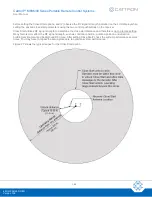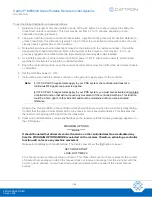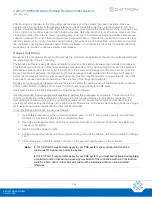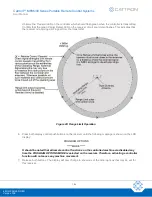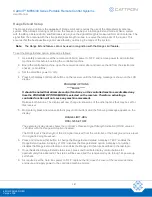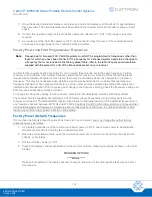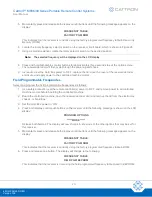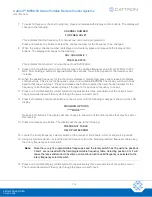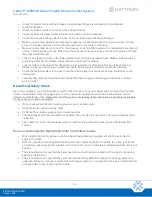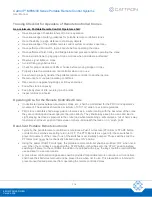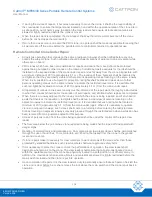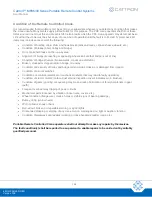
Cattron™ MP96/48 Series Portable Remote Control Systems
User Manual
114
68C-MP96/48-RD-EN
Version 006
Appendix II
– Recommended Safety Rules for Portable Remote
Controlled (PRC) Cranes
For the purpose of these rules, Portable Remote Control or PRC refers to Radio Frequency (RF) Controls. The
information contained herein is based on data gathered from various users of portable remote control crane
systems
.
Cattron emphasize that the recommendations contained herein are not intended to supersede
the rules or regulations of our customers, or the rules and regulations of any applicable local, state, or
federal government organizations
.
It must be fully understood that the
recommendations contained
herein are provided solely for your consideration and possible adoption.
Preface
•
Electric Overhead Traveling (EOT) Cranes typically operate in three motions. They are large, bulky pieces
of equipment that efficiently handle heavy loads at comparatively high speeds. Frequently, they are
operated in restricted areas where workers are engaged in various tasks on the floor below. Under these
conditions, crane operators using Portable Remote Control (PRC) must take great care, and operators
must be constantly on the alert to avoid accidents
•
The following guidelines have been carefully assembled and are promoted to indicate just how important
your careful and thoughtful actions are in helping to protect you and your fellow workers from harm, and
also to prevent equipment damage
•
These guidelines cover cranes when they are operational in Portable Remote Control (PRC) mode by
Radio Frequency.
If a crane is operated from cab or pendant control, the PRC system’s controller(s)
should be completely isolated by removing the battery and held under lock and key
•
A routine pre-shift inspection of the crane takes a lot less time than repairing a crane suffering from a
major problem. In addition, such pre-shift inspections are to be
considered as ‘safety basics’ which are an
important par
t of a crane operator’s duties
Operator Safety Basics
Before starting your shift as the crane operator, make sure the crane has a current inspection certificate and that
qualified personnel have carried out the following inspections and checks. If any item below does not pass
inspection, notify your supervisor immediately. In many cases, the problem will need to be fixed before you are
allowed to operate the crane. In addition, please realize that the person now reading these instructions is primarily
responsible for his or her own health and safety.
Area Inspection
•
Take a good look around the work area for any obstructions
•
Check that the rails are intact and are not bent or damaged
•
Make sure there are no oil or brake fluid leaks on the area below where the crane travels
•
Make sure rail stops are present, physically secure and free of damage at the end of all crane rails
•
Check that walkways are sturdy and have handrails
•
Ladders should not be loose and all rungs should be in place
Crane Inspection (Mechanical and Structural)
•
Make sure all moving machinery has protective guards installed over moving parts
•
Make sure all bridge and trolley rail stops are welded or bolted in position with no evidence of damage
from bridge or trolley impact

